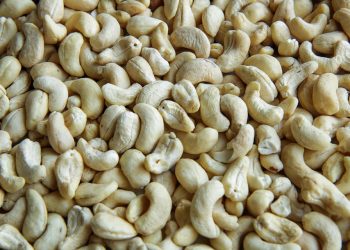Intermittent fasting plans can be a transformative approach to eating that helps you regain control over your health and well-being. If you’re feeling overwhelmed by diet trends, intermittent fasting might just be the refreshing change you need. It’s not about starving yourself; it’s about giving your body the time it needs to heal and rejuvenate.
Contents
What Is Intermittent Fasting?
Intermittent fasting (IF) is a dietary approach that cycles between periods of eating and fasting. It’s not about what you eat but when you eat. This method has gained traction for its potential health benefits, including weight loss, improved metabolic health, and even longevity.
But why should this matter to you? Because it offers a simple framework to help you break free from the cycle of constant snacking and emotional eating. You can enhance your mental clarity, boost your energy levels, and feel more in control of your health.
Why Choose Intermittent Fasting?
Before diving into the plans, let’s talk about why you might want to consider intermittent fasting.
- Weight Control: By limiting your eating windows, you may naturally consume fewer calories.
- Improved Metabolism: Fasting can help regulate insulin levels and improve your body’s ability to burn fat.
- Mental Clarity: Many people report increased focus and energy during fasting periods.
- Simplicity: No complicated meal prepping or calorie counting.
Now that you know what intermittent fasting is all about, let’s explore five easy plans that are perfect for beginners.
1. The 16/8 Method
The 16/8 method is one of the most popular intermittent fasting plans, and for good reason.
How It Works: You fast for 16 hours and eat during an 8-hour window. For example, if you choose to eat from noon to 8 PM, you skip breakfast but enjoy lunch and dinner within that period.
Benefits:
- Easy to fit into your daily routine.
- Allows for flexibility in meal planning.
- Supports weight loss and metabolic health.
Tips:
- Start your eating window with a nutritious meal that includes protein and healthy fats.
- Hydrate! Water, herbal teas, and black coffee can help during fasting hours.
2. The 5:2 Diet
If you prefer a less stringent daily routine, the 5:2 diet might be your best fit.
How It Works: You eat normally for five days of the week but restrict your calorie intake to about 500-600 calories on two non-consecutive days.
Benefits:
- Less stress about daily eating windows.
- Encourages mindful eating on fasting days.
Tips:
- Choose low-calorie, nutrient-dense foods to maximize your intake.
- Consider meal prepping for fasting days to ensure you stick to your calorie limits.
3. Alternate-Day Fasting
For those who want a more serious challenge, alternate-day fasting could be the way to go.
How It Works: You alternate between days of regular eating and days of fasting (or very low-calorie intake).
Benefits:
- May significantly impact weight loss and metabolic health.
- Gives your body extended time to recover and repair.
Tips:
- Take it slow. Start with a modified version—like having a small meal on fasting days.
- Listen to your body. Not every day has to be a full fast.
4. The Warrior Diet
This plan is for those who love their evenings.
How It Works: You eat small amounts of raw fruits and vegetables during the day and consume a large meal at night over a 4-hour eating window.
Benefits:
- Great for those who thrive on a more primal eating approach.
- Encourages a focus on whole foods.
Tips:
- Make sure your evening meal is balanced with protein, healthy fats, and complex carbs.
- Stay hydrated throughout the day to curb hunger.
5. The Eat-Stop-Eat Method
This plan is a bit more intense but can be effective.
How It Works: You fast for a full 24 hours once or twice a week. For example, if you finish dinner at 7 PM, you wouldn’t eat again until 7 PM the next day.
Benefits:
- Can lead to significant fat loss and metabolic benefits.
- Simple to follow with clear start and end times.
Tips:
- Use this method only if you feel comfortable and your body is accustomed to fasting.
- Break your fast gently with a light meal to avoid shocking your system.
Tips for Success with Intermittent Fasting
Starting intermittent fasting can feel daunting, but with the right mindset and strategies, you can make it a smooth transition.
- Listen to Your Body: Pay attention to how you feel during fasting periods. It’s normal to feel hungry at first, but if you start feeling weak or dizzy, it’s essential to adjust your approach.
- Stay Hydrated: Drink plenty of water, herbal teas, or black coffee to keep hunger at bay.
- Plan Your Meals: Focus on whole, nutritious foods during your eating windows to ensure you’re fueling your body properly.
- Be Flexible: Life happens! If you miss a day or feel off, that’s okay. Adjust and try again the next day.
Common Misconceptions About Intermittent Fasting
Let’s clear the air on a few myths surrounding intermittent fasting.
- Myth 1: It’s Just Another Diet: It’s not a diet; it’s an eating pattern. You’re not restricted in what you can eat; you’re just changing when you eat.
- Myth 2: You’ll Lose Muscle Mass: Research shows that if done correctly, intermittent fasting can actually help maintain muscle mass while losing fat.
- Myth 3: It’s Only for Weight Loss: While many start for weight loss, intermittent fasting also offers various health benefits, including improved heart health and mental clarity.
Seeking Support and Resources
Embarking on this journey alone can be challenging. Consider seeking support from communities, whether online or in-person, where others are also exploring intermittent fasting. Websites like the Mayo Clinic and Healthline offer extensive resources and research-backed insights to help you navigate your journey.
Bottom Line
Intermittent fasting can be a powerful tool to reclaim your health and transform your relationship with food. Whether you choose the 16/8 method or the more intense eat-stop-eat approach, remember that the goal is to find what works for you.
Start small, be patient, and celebrate your progress. You’re not just changing your diet; you’re changing your life. So why wait? Dive into these plans and discover a new world of possibilities for your health!
FAQ
Q: Can I drink coffee or tea during fasting?
A: Yes! Black coffee and herbal teas are generally allowed and can help curb hunger.
Q: What if I feel hungry during fasting?
A: It’s normal to feel hungry initially. Stay hydrated, and your body will adjust over time.
Q: Is intermittent fasting safe for everyone?
A: While many people find it beneficial, it’s always best to consult with a healthcare professional before starting any new eating plan, especially if you have underlying health conditions.
Now, are you ready to take the leap into intermittent fasting? Your journey begins today!
Get Your FREE Natural Health Guide!
Subscribe now and receive our exclusive ebook packed with natural health tips, practical wellness advice, and easy lifestyle changes — delivered straight to your inbox.
















